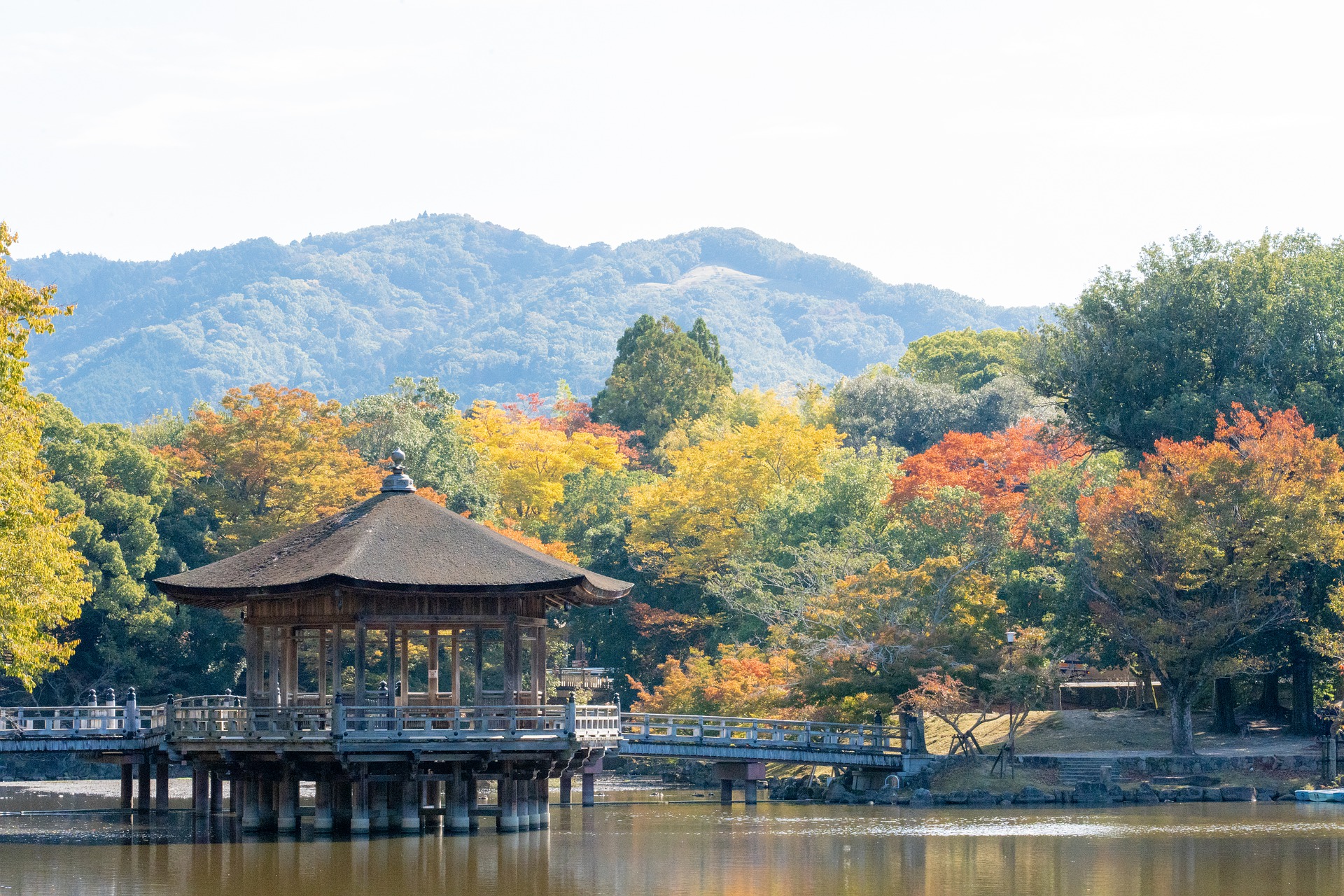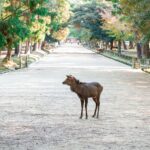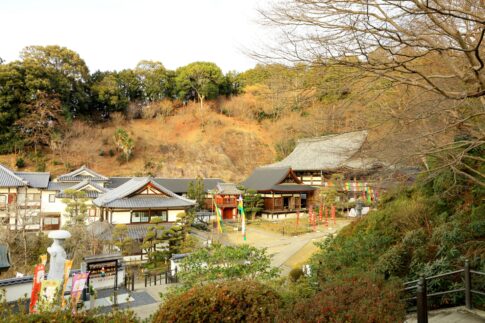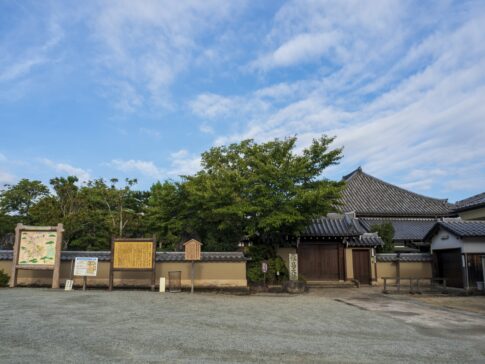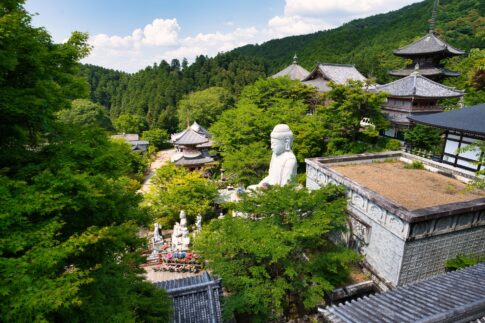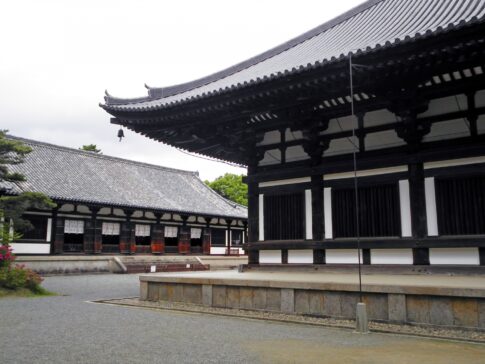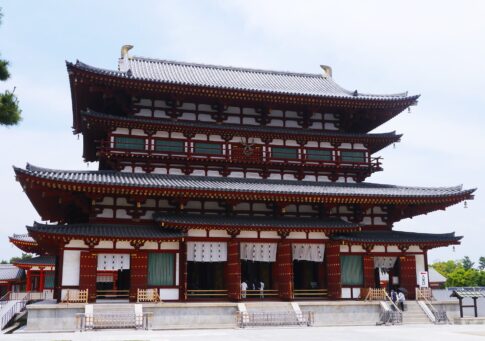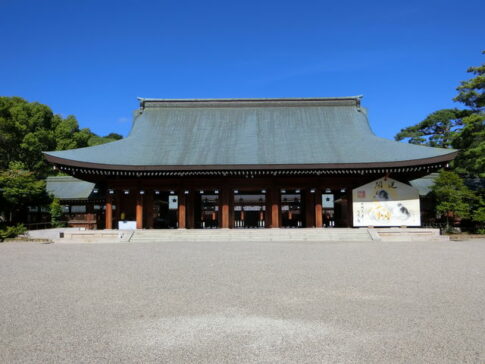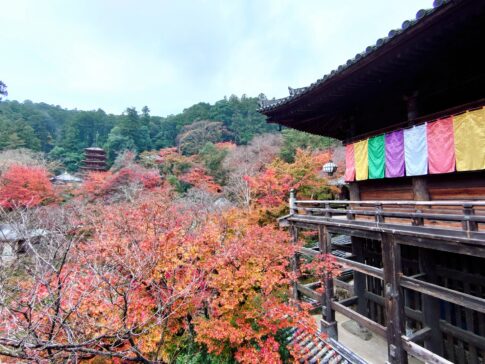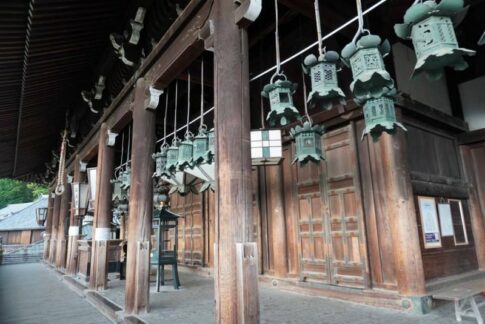This is an octagonal building with a cypress bark roof floating on the Sagi-ike Pond in Nara Park.
Its beautiful reflection on the surface of the water makes it a waterside resting place.
The present Ukimido was restored to its original beauty during a three-year restoration project from 1991 to 1994, when the old Ukimido had become dilapidated.
The temple can be reached from Kasuga-taisha Shrine through the forest of Asakayagahara.
Usually it blends in with the surrounding landscape and is a bit of a hidden gem because it does not attract many group tourists.
In particular, cherry trees are clustered on the north bank, and the area is crowded with people viewing cherry blossoms in spring.
In addition to cherry blossom foliage, there are many maple trees on the southeast side of the island across the bridge.
It is also a popular spot for the summer To-ka-kai (lantern festival), where one-way traffic restrictions are enforced every year due to the large number of people that flock to the area. Depending on the season and time of year, boats are available for rent.
What you need to know before visiting Ukimido
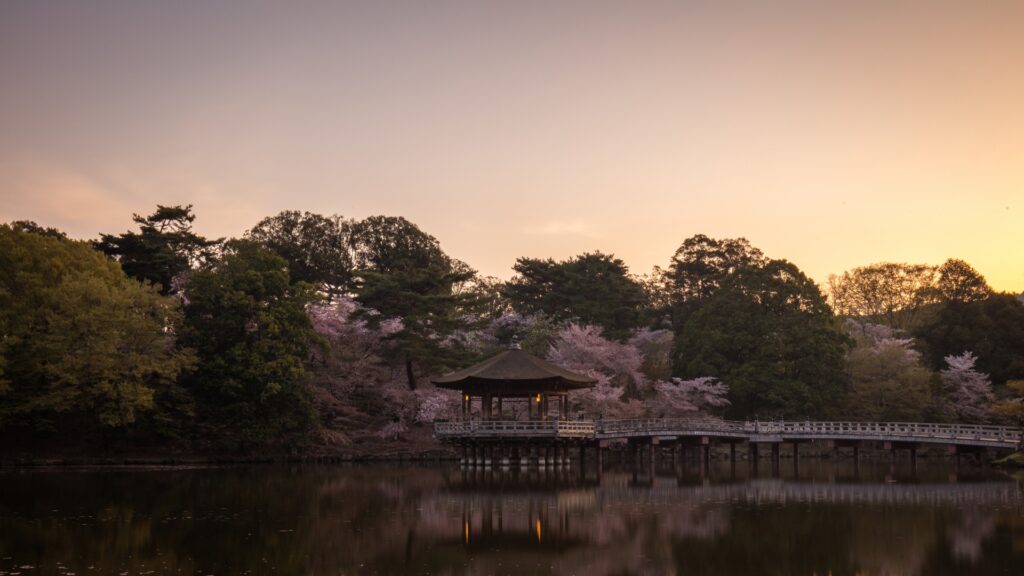
① History
Its history is not so old, having been built in 1916, followed by restoration work in 1966 and reconstruction of a new Ukimido in 1994.
② How to Enjoy
Every August, history is reenacted in the ancient capital of Nara.
Thousands of candles are lit in Nara Park, recalling the glory and prosperity of the Nara capital 1,300 years ago.
This lantern festival is called Nara Tokae (Nara Lantern Festival) and usually lasts for 10 days starting in early August.
We hope you enjoy this collection of photos taken on the night of the full moon, and we hope you enjoy the unique atmosphere of Nara Park on this night.
From Ukimido, you can see the beautiful scenery reflected in the pond.
We will explain more about Nara Tokae.
Nara flourished as a capital 1300 years ago.
The vast nature in Nara still preserves the vestiges of ancient Japan.
The gentle light of candles, which is appropriate for such a place, brings a sense of nostalgia and soothes the soul.
The “Nara Tokae” is a candlelit event that illuminates the prayers of the people gathered in Nara, a World Heritage site where time passes slowly and leisurely.
The Nara Tokae was born in 1999.
The candlelight of Nara, the ancient capital of Japan, has been blending into the city and people’s hearts in various ways.
For only 10 days in summer, candlelight flowers bloom in the vast greenery and history of Nara.
The “Toka” is a flower-shaped lump that forms at the end of the candle.
It is said to bring good luck. During the festival, candles will be lit daily at a total of eight venues.
The main areas are: Kofukuji Temple and Sarusawa Pond Area, National Museum, Asakayagahara and Ukimido Area, and Ukigumo and Kasugano Area.
To this will be added the area around Todaiji’s Kagami-ike Pond on the 13th and 14th, and the approach to Kasuga Taisha Shrine on the 14th.
Each area will have its own special effects.
In the approach to temples and shrines, the lanterns will be placed along the paths; in ponds such as Sarusawa Pond, the lanterns will be placed around the ponds; and in the large Kasugano Park area, candles will be used to create giant pictures.
In Asakayagahara, bamboo objects are made and hung with light bulbs so that visitors can walk through them.
At Ukimido, candles line the parapets of the bridge and around the buildings, creating quite an atmosphere.
On weekends during the festival, there is “Honoakari Live” on a special stage in the park, where you can listen to performances of various musical instruments.
The performance in the pale light is fantastic.
Also, during this period, Kofukuji Temple extends the viewing hours of the National Treasure Hall and Tokondo, and the “Nara Tokae Noh Play” is held at the Nara Prefectural New Public Hall Nohgaku Hall.
Tokae is a flower-shaped lump of wax that sometimes forms at the end of the wick of a candle. In Buddhism, it is considered to be a good omen.
The Nara Tokae itself is a completely non-religious event, and since it began in 1999, it has grown in scale and number of visitors, and has quickly become a major annual event.
It is an event where visitors can enjoy a different and fantastic view of Nara Park on a hot and humid summer evening in the Basin.
The most beautiful and popular venue is the Ukimido venue.
The golden hexagonal Ukimido and the pier that crosses it.
Candlelight frames the pond.
A small boat drifting on the surface of the water looks like a moon boat paddling through a forest of stars.
Please take a boat and drift leisurely on the surface of the water.
You will surely feel like a celestial being.
If you go to Ukimido, this season is the best to see the beautiful scenery.
③ How to Go
The Ukimido is located in Takabatake-cho, Nara City, Nara Prefecture.
JR Nara Station, Kintetsu Nara Station: 5 minute wlak from “Daibutsu-den Kasuga Taisha-mae” bus stop on the city loop bus.
④ Light-up Period
Nara Park, where Ukimido is located is illuminated throughout the year, creating a fantastic atmosphere that differs from that of the daytime.
Light-up Promenade Nara was originally held during the off-season in the summer, but it has become a well established summer event in Nara.
- Light-up period (normal)
Light-up period: All year round (Todaiji Temple is lit up only in summer)
Lighting hours: 19:00 – 22:00 (from 18:00 in September)
- If you want to see the Light-up Promenade
Light-up period Mid-July to late September
Light-up hours: 19:00-22:00 in July and August, 18:00-22:00 in September
Summary
Today we introduced Ukimido.
Ukimido is located in Nara Park, so it is easy to go around.
In addition, there are not so many tourists around there, you can enjoy its beauty and serenity.
